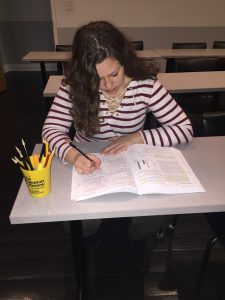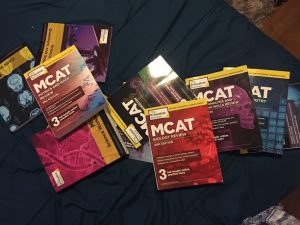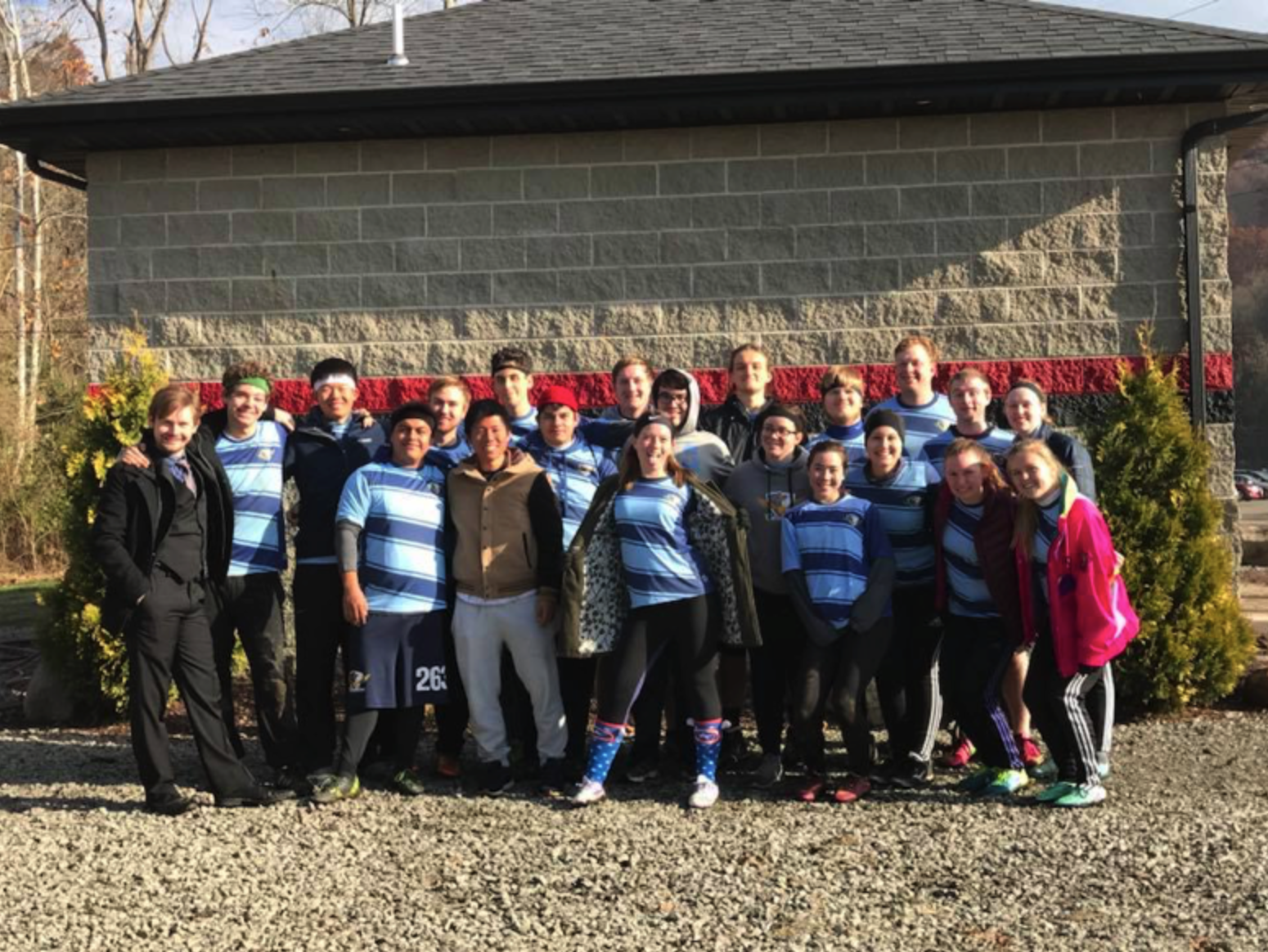By Jess Gaul
In 1978, Randee Haven-O’Donnell looked down from the plane and saw the diverse North Carolina landscape for the first time.
After whipping past the Outer Banks, Haven-O’Donnell suddenly saw the lush Piedmont covered in pine trees.
“I said, ‘This is special. It feels like home,’” said Haven-O’Donnell, a member of the Carrboro Board of Aldermen.
As North Carolina transplants, Haven-O’Donnell and her husband Gerry O’Donnell settled in Carrboro. The couple lived in The Chateau Apartments with their lab, Bessie. N.C. 54 had only two lanes. Each morning, they woke up with a view of idyllic Lloyd Farm.
“We’d wake up in the morning to cows, and it was perfect,” Haven-O’Donnell said.
Today, Carrboro is regarded as a beacon of progressivism and equality. In 1995, the town elected the state’s first openly gay mayor and the first lesbian police chief in 1998. It was also the first North Carolina municipality to provide benefits to same-sex couples.
But, like any other place, Carrboro has a past.
Exploring the Cities Controversial Beginnings
Some have called it Chapel Hill’s “even more liberal” neighbor. The unique atmosphere of inclusion and diversity is one that defines the town of Carrboro and makes its namesake surprising — because it’s named for Julian Shakespeare Carr, an infamous white supremacist and industrialist from the early 20th century.
Today, walking down Weaver Street on a sunny Sunday afternoon, you’ll be met with what appears to be an escape, an oasis, a community of completely individual and unique members.
The cow population has probably dwindled, but it still feels just as quaint and idyllic. Musicians plunk away for the enjoyment of the public. Young families enjoy local shopping and a healthy meal. And there are dogs — so many dogs.
This isn’t the first time that Carrboro’s name has been a hot topic. Carrboro first existed as the unincorporated community of West End. The community was then named Lloydville in 1900, after Chapel Hill businessman Thomas F. Lloyd.
The town was also briefly named Venable, after University of North Carolina at Chapel Hill chemistry professor, Francis Venable. But after two years, Julian Carr requested the name be changed to “Carrsboro” in exchange for electricity provided by the Durham Hosiery Mill, which Carr operated beginning in 1898.
June 2, 1913, was the erection of Silent Sam, the infamous monument of a Confederate soldier on the UNC-CH campus. Carr was famously known for speaking about whipping a female slave following the Battle of Appomattox.
Carr never lived in Carrboro. Like any historical figure, his identities were complicated — he celebrated a massacre of black people in Wilmington in 1898, was a private in the Confederate Army and endorsed the Ku Klux Klan.
But Carr also gave land for portions of Duke University’s campus, and supported the founding of what would be known as the African American-owned North Carolina Mutual Life Insurance Company. He also contributed money to the North Carolina College for Negroes in Durham, which would become North Carolina Central University.
Richard Ellington, president of the Chapel Hill Historical Society and Carrboro native, said that this complexity is why it’s important to consider the context of Julian Carr.
“I see no reason to change the name of the town,” Ellington said. “The historical context is going to be forgotten. If you don’t have a past, you don’t have much of a future.”
Like any town, Carrboro has grown and shifted socially and economically. There tends to be a separation between young Carrboro transplants and the Old Carrboro community.
Celia Pierce remembers a segregated part of town, between Chapel Hill and Carrboro on Rosemary Street. She remembers separate water fountains. She remembers when her high school was integrated.
Pierce lives in “Old Carrboro,” in the home that she grew up in as a child — the same one that her mother and her grandmother grew up in, too.
“Roots go pretty deep here in Carrboro,” she said.
Pierce, while ultimately supporting a name change for the town, acknowledged that many of the young innovators in local politics tend to forget the lessons of the past.
“When you reach a certain age you come to realize that ‘OK, if we keep moving forward without nodding to the past’ … What we end up doing is kind of discarding the older people,” Pierce said. “And what I see in Carrboro is — it’s getting to the point to where older people cannot afford to live here because of the taxes.”
Changes in the makeup of Carrboro also reached its racial demographics.
“Carrboro, in 1920, was the most integrated town in North Carolina, I’ll bet,” Ellington said. And you know why? Because they were all poor, working class people. They couldn’t afford to hate each other! They had to worry about feeding their kids.
“They didn’t have the luxury of hate. It was just a fact of life — they had to help each other. It was a much smaller town, and it still had this ‘We’re all in this together’ attitude.”
Jim Porto served as the mayor of Carrboro from 1983 to 1987. A native of Columbia, South Carolina, Porto moved to the Triangle as a young adult to attend Duke University.
In April 2016, Porto sent an inquiry to the Board of Aldermen inquiring about the possibility of a name change for the town.
In his request, Porto suggested the name “Paris,” partially due to his time spent teaching in the French capital and his admiration for the city’s livability. Carrboro was also jokingly coined the “Paris of the Piedmont” in 1970 by a local reporter.
“The goal of the town is to have a little community that’s at a scale that people can feel good about,” Porto said. “We start thinking about how we can emulate our namesake.”
For Porto, a name change is an important step in propelling the town forward to its goals for the future.
“By taking a stand like this, it basically enshrines that whole notion of progressive community,” he said. “I think there is a loss of opportunity in a way for us to go beyond even what we are now, and become a national statement for what we stand for.”
Part of what drew Board of Aldermen member and Texas native, Damon Seils, to Carrboro was its reputation for being a trailblazer of progressivism. He said he thinks that focusing on changing the name could distract from other steps toward racial equity, such as fair policing and equal treatment in schools.
“I think Carrboro and the people of Carrboro over many, many years have created a community that in a lot of ways, sticks it to the reputation of Julian Carr,” Seils said. “And to me, that’s a legacy we ought to be a part of.”
In August 2017, an unknown person started an online petition to change the name of Carrboro to “Unicornboro.” The petition garnered 53 signatures. Whether the petition was serious — or in jest, as Porto speculates — is uncertain.
Additionally, a Chapel Hill High School senior wrote to the Carrboro Board of Aldermen in late January requesting that a name change be considered.
Porto, Haven-O’Donnell and Seils each acknowledged that if a name change was to occur, it would be because of a majority public opinion. The likely next step would involve some sort of community forum where citizens could discuss changing the town name.
“The work that would be needed and the attention that would be drawn to something like a name change for the town would, to be honest, distract us from what I see as the real work in advancing racial equity, which is hard and long-term, and requires a lot of energy and patience,” Seils said.
Edited by Brittney Robinson


